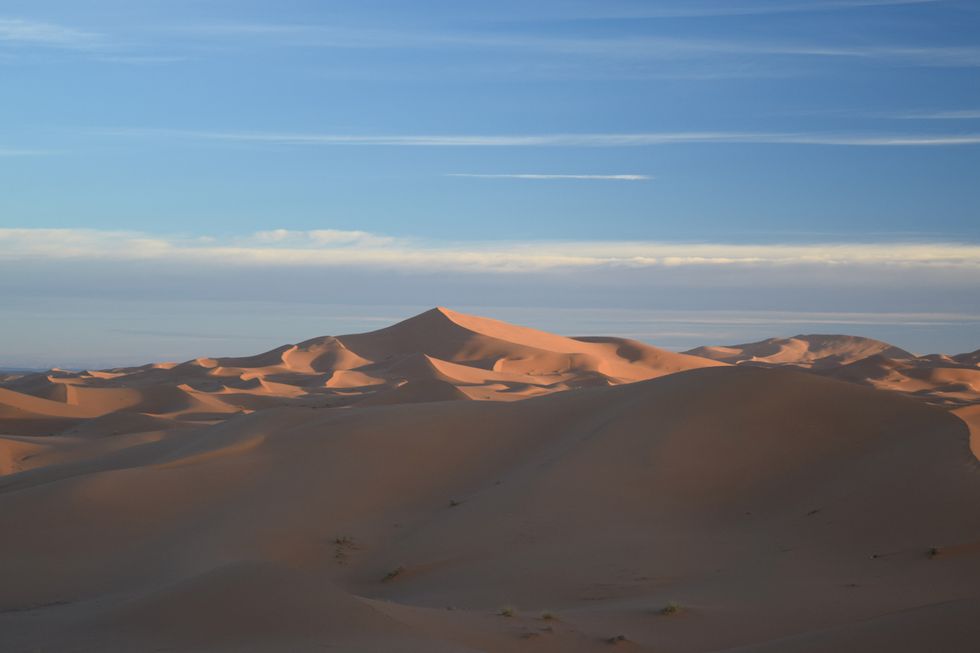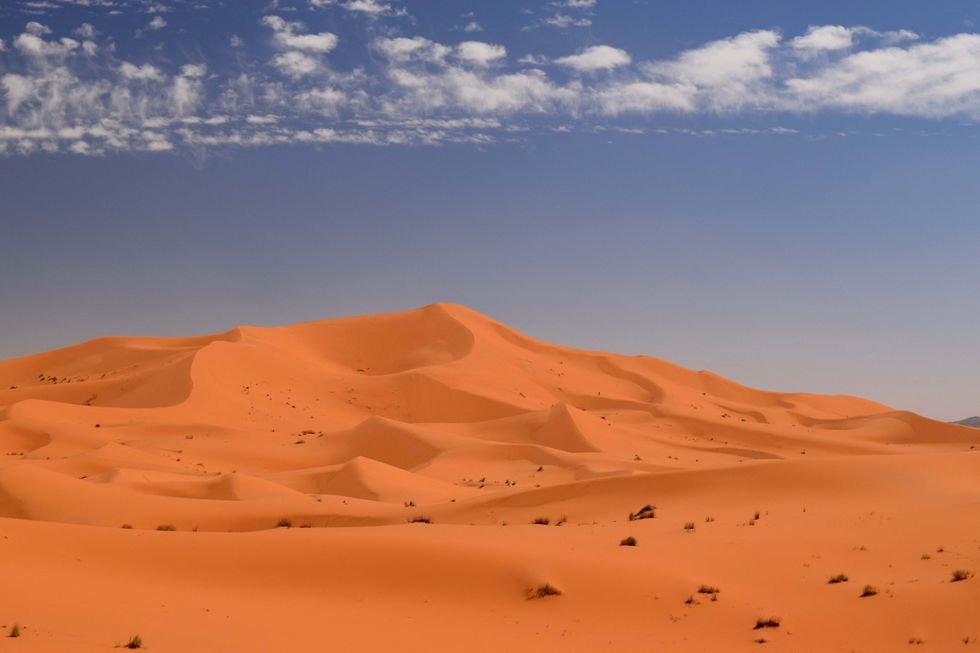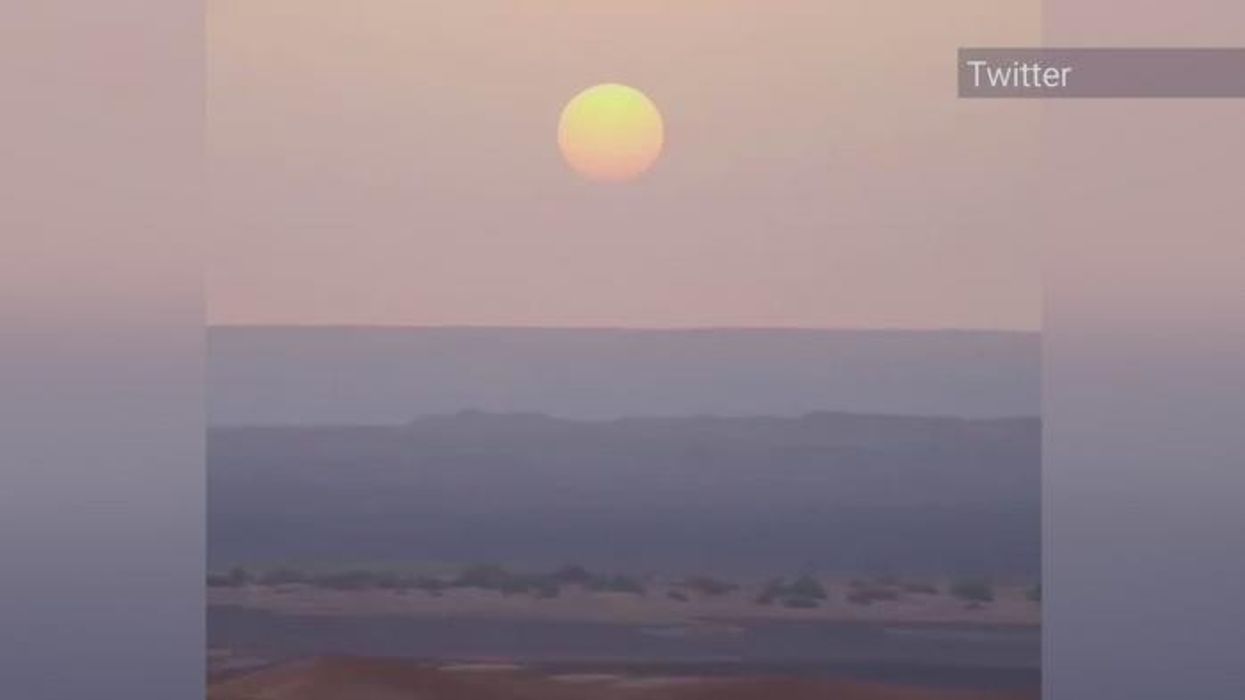Sand dune mystery that baffled scientists for decades finally solved

The ‘awe-inspiring’ dunes’ age was discovered thanks to a specialist team of UK researchers
Don't Miss
Most Read
A mystery surrounding the age of Earth’s largest sand dunes has been solved by researchers in a groundbreaking world-first study.
Star dunes are pyramid-shaped sand formations with ‘arms’ that stretch out across the desert – giving them a star-like appearance from above.
They can reach up to 300 metres in height, but until recently, very little else was known about the impressive dunes.
Today, scientists from Aberystwyth University unveiled the results of high-tech research into star dunes’ internal structure, as well as how long they take to form.
The research focussed on one particular dune – Morocco’s ‘Lala Lallia’, or “highest sacred point” in the local Berber language, which towers over the Sahara near the Algerian border.
The team used a type of ground-penetrating radar to look inside the dune, using luminescence dating – examining the amount of energy trapped inside the dune’s grains of sand – to determine Lala Lallia’s age.
Scientists found the dune took 900 years to form, growing by 6,400 metric tonnes every year thanks to winds carrying sand across the desert.
The radar used in the study meant the research team could see how and when the dune formed over time, tracking its layer-by-layer development up to the present day.
LATEST DEVELOPMENTS:

The researchers probed into Morocco's Lala Lallia star dune, which towers over the surrounding desert
|Reuters
Aberystwyth’s Geoff Duller, who co-authored the research, said: “I first encountered star dunes in Namibia 20 years ago, and was instantly amazed at the size of them.
“I have a vivid memory of the long climb to the top, struggling up very loose sand in the heat of the day.
“I find desert dunes very beautiful… The sight of the sinuous curves, and the way that the light and shadow changes with the sun mean that they always look different, whether that is in the cool of the morning, the midday sun or near sunset.
“The different colours of sand in different deserts are also very striking, with yellow, white, red and even black dunes in different parts of the world.”

Researcher Charlie Bristow said the "extraordinary" dunes were "intimidating, mobile mountains of sand"
|Reuters
Birkbeck University’s – and fellow study co-author – Charlie Bristow said: “Star dunes are formed in areas with complex wind regimes, which means winds blowing from different directions, and net sand accumulation, points within the desert where big piles of sand can be blown around to form giant dunes.
“They form extraordinary and awe-inspiring landscapes… From the ground they can be intimidating, mobile mountains of sand.”
While this research took place in Morocco, Earth’s largest star dunes can be found in China’s Badain Jaran desert, as well as other sand seas in Africa and the Middle East.
But the only star dune to have ever been found preserved as sandstone was a little closer to home – a 250-million-year-old dune in Scotland.










